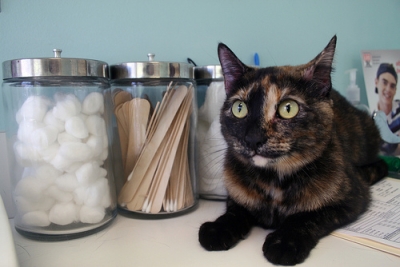
Cytauxzoonosis is caused by protozoa. Protozoa are tiny organisms found in the environment. The host animal is the bobcat, although the Texas cougar was discovered to be a host too. It was also found in a captured white tiger.
Cytauxzoonosis is not a zoonotic disease in spite of the name. In other words, it is not transmitted to humans or to farm animals other than cats. Ticks transmit the disease to cats through their bite.
Symptoms can appear suddenly even in healthy cats – high fever, dehydration, loss of appetite, pain, jaundice, enlarged liver and spleen, enlarged lymph nodes, pale mucous membranes, respiratory problems, tick infestation.
It should be noted that some cats have no visible signs of the disease. It acts quickly and cats can die within a week or two of infection.
Diagnosis is made through blood testing and in some cases of organ involvement, a fine needle aspirate. Blood samples can be sent to a laboratory to confirm the presence of the disease through a test called PCR (polymerase chain reaction).
Until recently, cytauxzoonosis was almost always fatal to cats. However there are medications such as imidocarb dipropronate, and a combination of atovaquone and azithromycin that are used along with supportive care. While imidocarb has not been very effective, 60% of cats treated with atovaquone and azithromycin have survived, not a great number, but more than twice as many as previously. Supportive care may include administering fluids, blood transfusions, treatment of any complications, good nutrition.
Unfortunately there are not many anti-tick treatments available for cats and even those are not a guarantee against tick bites. But the treatments should still be applied, especially for those cats that go outdoors.
The best preventive is keeping your cat indoors particularly during summer when ticks are most active. If your cat does do outside, check for ticks each time s/he comes in. Cats surviving the disease can be carriers.
If you are using a flea and tick treatment for your cat, use one that is made for cats only and follow the manufacturer’s directions.
Related Articles

